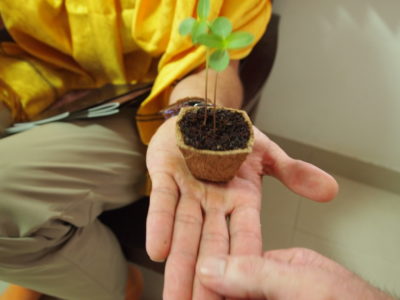
Imagine a product that plays a key role in enhancing food production and gardening success and is environmentally friendly and long-lasting…
It is a material found in nature, a hearty byproduct of the coconuts produced in abundance by coconut palms.
That product is the naturally occurring fibrous material found on the outside of coconut husks that is naturally processed for use.
It’s known as coir.
What Is Coir Used For?
Coir has been used for centuries by navigators in rope form for rigging and ship cables. There are also records of its use in England and India in floor covering materials in the 19th century. Today, coir is used to create an assortment of products, from rugs and doormats, to plant pots and hanging basket liners, to a cultivation-enhancing gardening material and blankets used for erosion control. Some potting mix products also include coir.
Coir‘s easily combinable structure makes it useful in a variety of products. It is used to create yarn, brushes, insulation panels, and packaging. While some upholstery manufacturers use ecologically friendly coir on its own, it is also used in a form bonded or combined with rubber as a component of car seats, mattresses, sofas, and other furniture. Coir is also used, when combined with rubber or timber veneers, to create an effective plywood replacement. This is an important factor in the conservation of tropical trees that would otherwise be logged for plywood.
Where Does Coir Come From?
In its natural state, coir can be found in two colors. The more durable brown coir comes from mature coconuts and is widely used, while white coir comes from green coconuts and is primarily used to make products such as fishing nets.
Most coir is processed where coconuts are grown. While coconuts grow in nearly 100 countries around the globe, most coir, after being separated from the coconut husk by soaking it in water (a process called retting), is distributed in its raw form by its main exporters, India and Sri Lanka. Indonesia, Malaysia, the Philippines, Thailand, and Vietnam export coir to a lesser extent.
Are There Different Kinds of Coir?
Coir is broken down into either brown or white coir. This is determined by the age of the coconut. Young coconuts will produce softer, lighter fibers while mature coconuts produce thicker brown fibers. Examples of forms of coir:
- dust
- fibrous strands
- chips
- discs
- block form*
- hand-knotted netting
- rope
- curled coir
- tea bags
*The block form is dual purpose in that it can be immersed in water to break down into dust. This dust quickly saturates with water, expanding several times its size.
What Are the Benefits of Coir?
Coir is an excellent medium for gardening in that it holds moisture while allowing air to pass through. This enables plants to stay hydrated without developing rot or fungus. It is also resistant to garden pests such as moths. Once it has dried out, coir absorbs water better than peat moss during water reapplication, and it maintains more moisture.

Coir’s natural presence in plentiful quantities — coconut harvests happen approximately every two months — along with its resistance to decay, means buying less over time, making it both an environmentally and a budget-friendly choice.
-The Coir.com Team